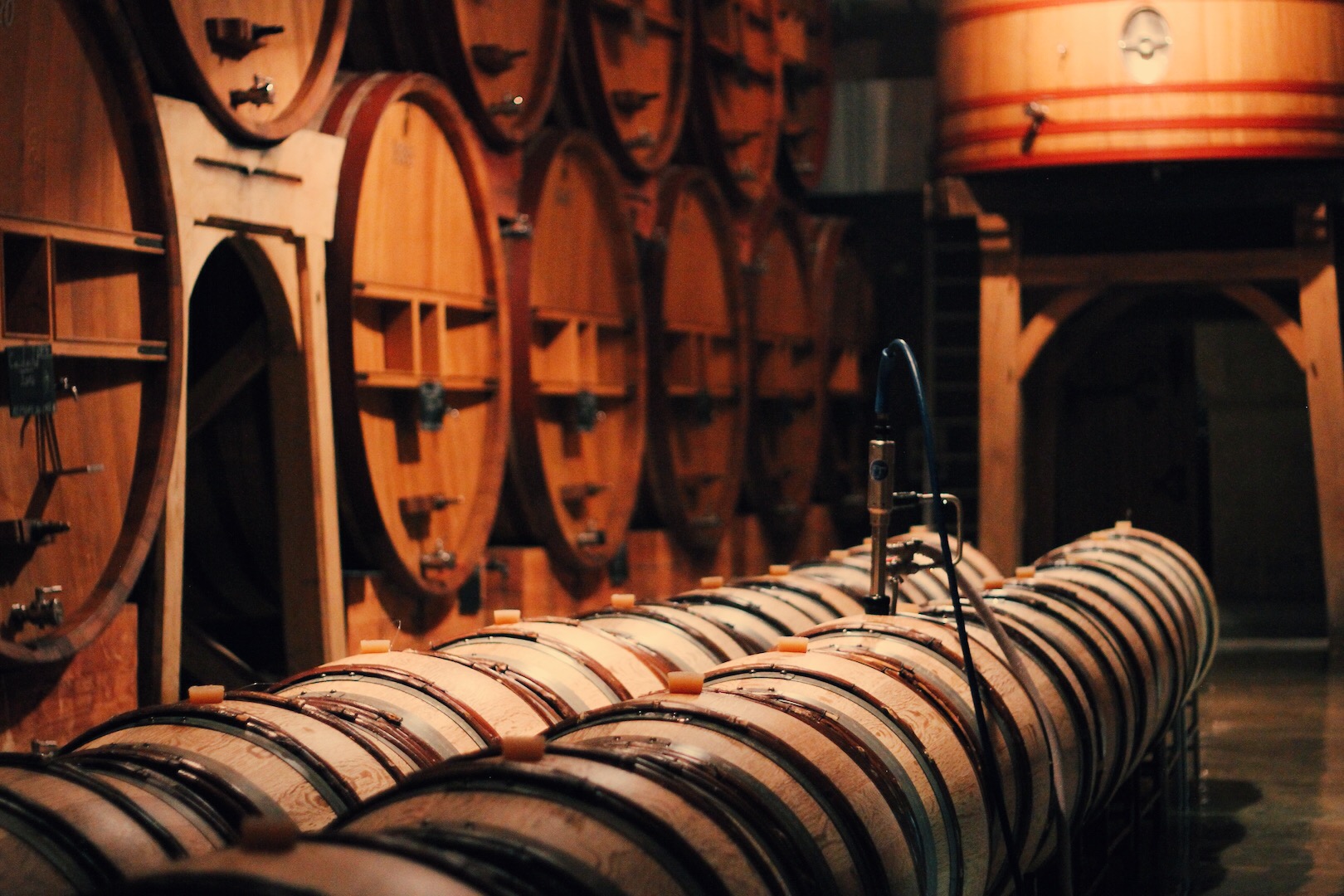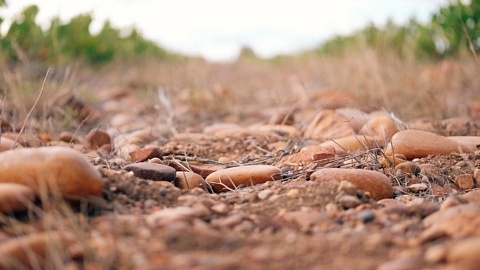A blended wine is lazy. The winemaker simply didn’t have enough grapes to make a single varietal wine, so he just chucked what he had together in a barrel, and waited to see what came out, right? Halt your horses there cowboy, because you’ve got it all wrong.


Despite what you may have heard, ‘blend’ does not equate to ‘bad’. The act of blending means making a new wine using different grape varieties (such as a little bit of Pinot Noir with a splash of Gamay), or using different vintages (a 2008 with a 2010), different areas (some Stellenbosch with some Franschhoek) or even different barrels (mix a lightly toasted oak barrel of wine with a darkly toasted barrel and see what happens).
 In fact, the process of blending a wine is equitable to a work of art, as this is the time where a winemaker can creatively shine. It’s the moment where they can practice their flavour balancing skillz. The reason for this is that all grape varieties have their own personalities – much like us real human beings.
In fact, the process of blending a wine is equitable to a work of art, as this is the time where a winemaker can creatively shine. It’s the moment where they can practice their flavour balancing skillz. The reason for this is that all grape varieties have their own personalities – much like us real human beings.
 Some are loud and audacious like a Cabernet Sauvignon, filling your mouth with strong flavours such as cigar smoke and mint, while others are more demure and smooth, like the chocolate and coffee bean flavours of a good Merlot. The thing is, not everyone likes an overly powerful or too delicate wine, and so they may never go for either. This is where blending brings its magic, as it allows a winemaker to mix a few varietals together (such as the classic Cabernet Sauvignon, Cabernet Franc, Merlot, Malbec and Petit Verdot), and poof! – you’ve got yourself a red Bordeaux, a wine praised all around the world. Blending welcomes more people into the world of wine, creating something for everyone. And why shouldn’t it be so? The world is filled with different people, and they all like different things. Expanding our choices of wine can only be a good thing.
Some are loud and audacious like a Cabernet Sauvignon, filling your mouth with strong flavours such as cigar smoke and mint, while others are more demure and smooth, like the chocolate and coffee bean flavours of a good Merlot. The thing is, not everyone likes an overly powerful or too delicate wine, and so they may never go for either. This is where blending brings its magic, as it allows a winemaker to mix a few varietals together (such as the classic Cabernet Sauvignon, Cabernet Franc, Merlot, Malbec and Petit Verdot), and poof! – you’ve got yourself a red Bordeaux, a wine praised all around the world. Blending welcomes more people into the world of wine, creating something for everyone. And why shouldn’t it be so? The world is filled with different people, and they all like different things. Expanding our choices of wine can only be a good thing.
 Undoubtedly, one of the best examples of blended wine comes from the region of Châteauneuf-du-Pape, an area famous for mingling a mammoth quantity of different grapes together, the long list of which includes Grenache, Syrah, Mourvèdre, Cinsault and Clairette blanche (there are 13 varieties, so unless you’re studying to be a Master of Wine, there’s no way you’re ever going to need to remember them all). Châteauneuf-du-Pape is well-known for having a special ‘terroir’ (the characteristic taste and flavour imparted to a wine by the environment in which it is produced), as it has a soil made up of a layer of stones called galets (pebbles). The stones absorb the heat of the Southern French sun and reflect the warmth back to the vines, which in turn, grow grapes that are much more full-bodied, higher in alcohol and fuller in flavour. Yum.
Undoubtedly, one of the best examples of blended wine comes from the region of Châteauneuf-du-Pape, an area famous for mingling a mammoth quantity of different grapes together, the long list of which includes Grenache, Syrah, Mourvèdre, Cinsault and Clairette blanche (there are 13 varieties, so unless you’re studying to be a Master of Wine, there’s no way you’re ever going to need to remember them all). Châteauneuf-du-Pape is well-known for having a special ‘terroir’ (the characteristic taste and flavour imparted to a wine by the environment in which it is produced), as it has a soil made up of a layer of stones called galets (pebbles). The stones absorb the heat of the Southern French sun and reflect the warmth back to the vines, which in turn, grow grapes that are much more full-bodied, higher in alcohol and fuller in flavour. Yum.
 One of the kings of blending within the Châteauneuf-du-Pape area is the winery, Beaucastel. This beautiful winery takes its name from the Beaucastel family who lived in Courthézon in the middle of the 16th century, and today, it is being run by the fourth generation of the Perrin family. Upon entering through the grand, wireframe gates, we were welcomed into a deep green garden and quintessential Southern French-style space. The winery itself was also gorgeous. Think traditionally large wooden barrels and steam swirling in the arches of the ceiling as they were cleaned for this year’s harvest. It was a truly inspiring, winemaking space.
One of the kings of blending within the Châteauneuf-du-Pape area is the winery, Beaucastel. This beautiful winery takes its name from the Beaucastel family who lived in Courthézon in the middle of the 16th century, and today, it is being run by the fourth generation of the Perrin family. Upon entering through the grand, wireframe gates, we were welcomed into a deep green garden and quintessential Southern French-style space. The winery itself was also gorgeous. Think traditionally large wooden barrels and steam swirling in the arches of the ceiling as they were cleaned for this year’s harvest. It was a truly inspiring, winemaking space.
 Of course, as newcomers to wine, we’re always eager to taste, and we were fortunate to be provided a tasting of six organic wines that Beaucastel produces, one of which was an old vintage and had an unusual ‘barnyard’ aroma (think hay and horse poop). This aroma was not a defect, but a characteristic of ‘Brettanomyces’ (shortened to ‘Brett’ in wine circles), a special yeast that can alter the palate and bouquet. Today, Brett is considered undesirable in wine, and we agree it’s not an aroma one would seek out in a wine, but being able to detect something a little different is always interesting.
Of course, as newcomers to wine, we’re always eager to taste, and we were fortunate to be provided a tasting of six organic wines that Beaucastel produces, one of which was an old vintage and had an unusual ‘barnyard’ aroma (think hay and horse poop). This aroma was not a defect, but a characteristic of ‘Brettanomyces’ (shortened to ‘Brett’ in wine circles), a special yeast that can alter the palate and bouquet. Today, Brett is considered undesirable in wine, and we agree it’s not an aroma one would seek out in a wine, but being able to detect something a little different is always interesting.
 Overall, Beaucastel, nestled in the wonderland that is Châteauneuf-du-Pape, was the ultimate wine travel experience. It allowed an escape to the country, plenty of blended wine to taste and that peacefulness of holiday. It’s no surprise that Brad Pitt and Angelina Jolie like it just as much, as they recently asked the Perrin family to help them release their first wine – the 2012 Château de Miraval Rosé. This really is celebrity-worthy wine country.
Overall, Beaucastel, nestled in the wonderland that is Châteauneuf-du-Pape, was the ultimate wine travel experience. It allowed an escape to the country, plenty of blended wine to taste and that peacefulness of holiday. It’s no surprise that Brad Pitt and Angelina Jolie like it just as much, as they recently asked the Perrin family to help them release their first wine – the 2012 Château de Miraval Rosé. This really is celebrity-worthy wine country.
Details:
Beaucastel Winery
Visit by appointment only | Email to book: contact@beaucastel.com
Chemin de Beaucastel – Courthezon, France | Tel:+33 (0) 4 90 70 41 00
Our Wine Pick | Chateau de Beucastel – Chateauneuf-du-Pape Rouge 2013

















6 Comments